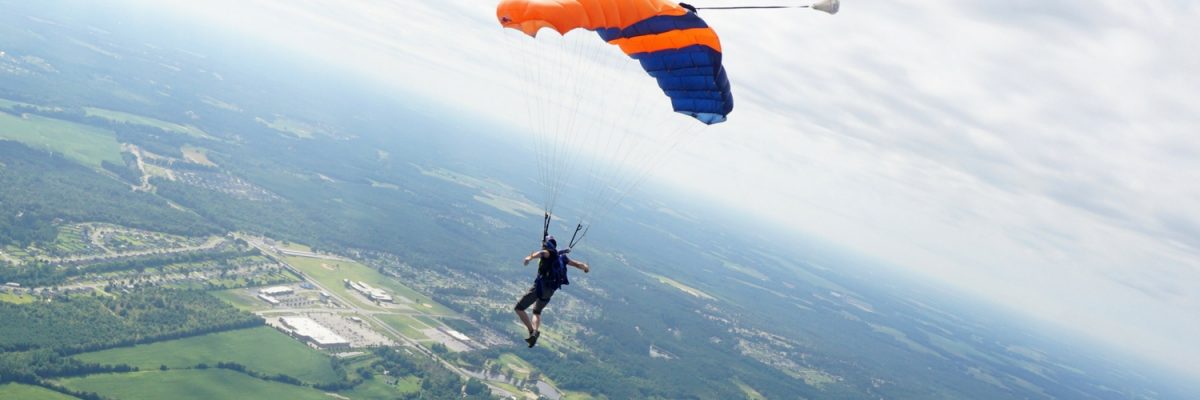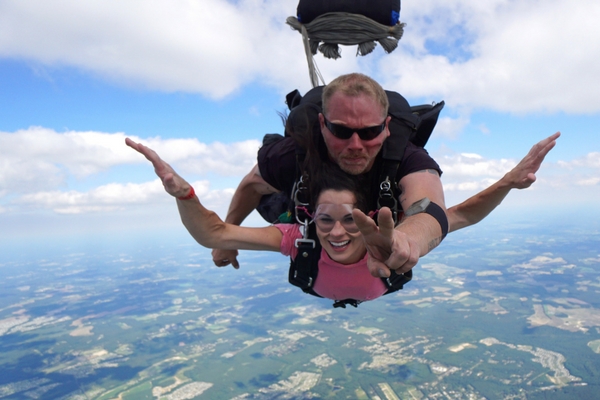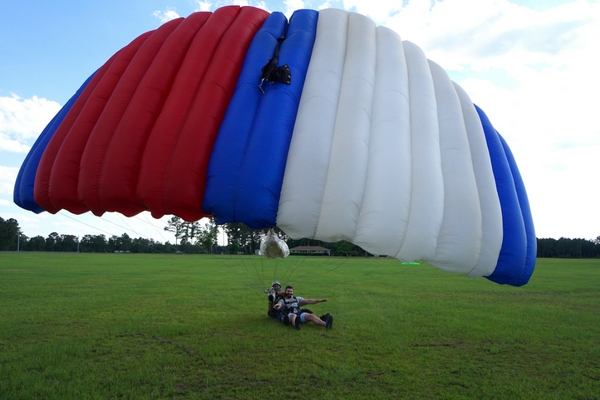
How Often Do Parachutes Fail
Thursday, July 20, 2017
- Team FlyXP
- 7/20/17
- 0
- Skydiving
Typically, about one in every thousand parachutes will experience a malfunction that requires the use of the reserve parachute. If that idea sends you screaming for the exits, hold up–first of all, one-in-a-thousand is incredibly rare in the real-world sense, and even if your parachute does fail to open (or fail to open in a flyable way), you’re still fine.
Skydiving today is safer than it’s ever been. According to the National Safety Council, a person is more likely to be killed getting struck by lightning or stung by a bee than during a skydive. The United States Parachute Association–of which Skydive Paraclete XP is a proud member–has kept careful record of skydiving safety statistics since all the way back in 1961. (That’s long before tandem skydiving was a twinkle in its father’s eye.) Those numbers are proud as punch to report that the safety of skydiving is better now than it has ever been. In fact, it’s even safer to make a skydive than it is to drive to the dropzone. Whaddayaknow.
That said: We know you still have questions. You should have questions. Here are our most thorough answers, so that you can feel that you’re making an educated decision when you decide to come out and step into thin air out here in Raeford. Here’s the straight story.
What Causes A Parachute To Malfunction?
There are several factors that can contribute to a parachute not opening in a manner that’s safely navigable back to terra firma–factors both under the skydiving operations control and outside of that control. Let’s talk about the first factors first.
The successful deployment of a parachute depends on the diligent maintenance of the parachute, the correct packing of the parachute and the correct body position of the skydiver when they go through their deployment procedures. These are the variables we can control, and the systems in place at Skydive Paraclete XP ensure that those boxes are checked: We use only top-quality parachuting equipment, which is rigorously inspected and maintained and flown only by proudly professional tandem instructors who carry the United States Parachute Association’s highest rating.
So What Actually Happens When A Parachute Fails?
Of course, even with all precautions taken, it’s still possible for the parachute to malfunction. It’s then–when the fates decide to have a go at us and throw an unlikely scenario in our laps–that our backup procedures kick in. Every parachute, after all, has a backup ready to go–and that backup is set up to deploy automatically in the one-in-a-million eventuality that it’s not deployed manually.
When a skydiver’s main parachute isn’t opening (or has opened with a malfunction), they simply jettison that parachute and deploy their reserve instead. Every jumper in the sky has committed to memory and embodied the procedure for doing so; tandem instructors are absolutely no exception.
Should I Be Concerned About A Parachute Malfunction?
Naw. Seriously.
Over the years, the equipment and training that we use in the sport of skydiving has evolved to a point where parachute malfunctions are generally a non-issue. If you’re jumping as a tandem student, you have even less to worry about–your instructor has undertaken extensive training to ensure they are able to deal with any situation that might come about, and you’re flying under the safest wing in the sky.
When you make a skydive at Skydive Paraclete XP, the biggest risk you’re going to be taking is that you’ll fall in love with human flight and find a whole new way to spend your weekends–flying parachutes! We dare you to take a tandem ride with us and see.
Tags: skydiving safety
Copyright © 2025, Skydive Paraclete XP, All Rights Reserved.
DropZone Web Design & Marketing by Beyond Marketing, LLC


